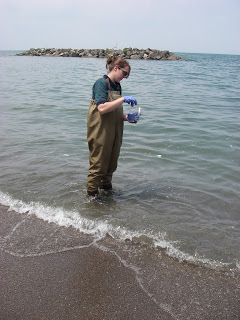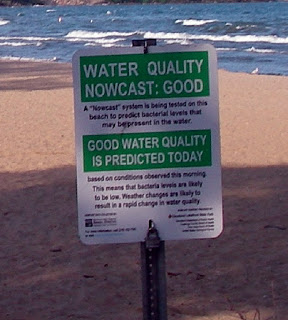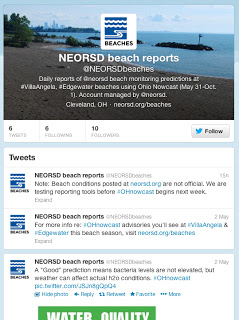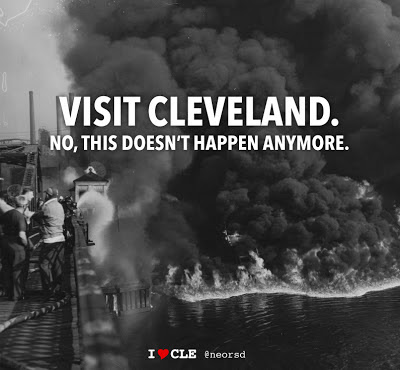
BEACHES: Holiday weekend means beach season is back, daily water-quality testing to resume
Posted by Jared Shepherd
- 4609 Views
- May 22nd, 2013
- in Miscellaneous
- No Comments
Local beaches will be flowing with activity this summer, above and beyond the dog-paddling of local swimmers.
On Monday, May 20, the Northeast Ohio Regional Sewer District resumed daily testing at Edgewater, Villa Angela, and Euclid beaches to determine water quality as we prepare for the start of beach season Memorial Day weekend.
There are very few agencies across the US that test recreational beach water quality this frequently, and the results help us better predict factors that affect beach conditions at two very popular Cleveland summer cool-down destinations.
Understanding the variables and testing frequency
Many variables can impact the water quality of the beaches: the presence of water fowl, the influence of Lake Erie currents, the fate of pollutants—like raw sewage—discharged into local water bodies following heavy storms, or stormwater runoff which can carry motor oil, garbage and other pollutants, as well.
“The Sewer District is one of the few agencies in the nation that monitors local water quality on a daily basis,” said Sewer District Manager of Analytical Services Mark Citriglia. “Over the years, we’ve significantly enhanced our research at two local beaches—Euclid and Villa Angela—which, historically, have been prone to high bacteria levels, exceeding EPA standards.”
Funding results in a water-quality prediction model called Nowcast
The Sewer District has completed all the work associated with a two-year grant from the US EPA through the Great Lakes Restoration Initiative (GLRI). The grant funding allowed the Sewer District to enhance its research efforts on the effectiveness of rapid analytical methods for measuring recreational water quality, determine the specific factors that contributed to water quality conditions at these beaches.
With funding from GLRI, the Sewer District developed a Nowcast model, which predicts water quality, for Villa Angela and Euclid beaches. This model was utilized during the 2012 recreational season with 86% accuracy. It was modified to include some environmental parameters like rainfall and turbidity to increase the accuracy.
Additionally, the Nowcast model for Edgewater Beach was enhanced to include the use of data from a rapid method, which should increase the accuracy of the Edgewater Nowcast. The new rapid method allows results to be available in approximately three to four hours, compared to 24 hours using conventional methods.
Prior to the adoption of the Nowcast System at Edgewater Beach and Villa Angela Beach, the predictions were based on Sewer District laboratory results from beach water samples collected and tested the previous day. The then-unavoidable 24-hour delay meant that bacteria levels could have increased or decreased substantially during that period.
Have fun in the sun and stay safe by the lake: How to stay informed
A Nowcast prediction of water quality will be provided each morning by 9:30 a.m., seven days a week. The latest beach water quality information can be found at neorsd.org or by following the Sewer District’s official beach-report Twitter account @NEORSDbeaches for morning predictions every day. Nowcast prediction signage also will be posted at the entrances of Edgewater and Villa Angela and Beaches.
Beachgoers who are consulting the Nowcast should be aware that water quality conditions can deteriorate rapidly as a result of storm conditions. The Nowcast program does not account for water quality changes which happen after the morning Nowcast prediction is issued.
The Nowcast System is supported by the Northeast Ohio Regional Sewer District, Cleveland Lakefront State Park, Cleveland Metroparks, Cleveland Department of Public Health, Cuyahoga County Board of Health, Ohio Department of Health, and United States Geological Survey, who has been a major partner in developing the methodology for Nowcast.




